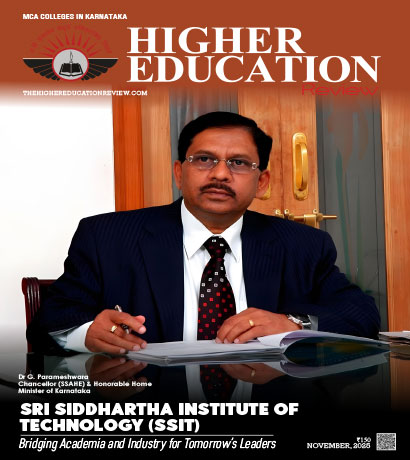Trend in the Indian education market - Need for Modernization and Innovation

Pradeep Varma, Director Millionlights
There are really two ways in which we can look modernization and innovation in the Indian education market. The first is to look at new innovations in pedagogy and teaching methodology such as the advent of MOOCs, Blended Learning, Flipped Classroom, Blended MOOCs and so on. The other aspect of change in the Indian education market is to examine how the education system can produce young men and women who are employable by the industry in India. Here we will examine briefly some of the issues that need to be tackled to ensure that the much spoken of "Demographic Advantage" that India is said to enjoy actually does become a strong pillar of growth for the economy.
Present Scenario
As per the latest available statistics from the Ministry of HRD, Govt. of India, there are 799 Universities, 39,071 Colleges and 11,923 Stand Alone Institutions of Higher Education in India (AISHE Report 2015-16).The total number of Universities includes 459 General, 101 Technical, 64 Agriculture & Allied, 50 Medical, 20 Law. Among this, the largest numbers of students are enrolled in the B.A. programme followed by B.Sc. and B.Com. programmes.
Authorities like the UGC and the AICTE regulate not only the establishment and management of institutions but also, sadly, define the curriculum.
As can be seen from the above, the Indian education system churns out large numbers of graduates. It is estimated that about 20 million youth are added to the work-force every year. However, the vast majority of them are unemployable. This is because even though they possess a graduation degree, they do not possess the necessary skills required by industry.
Indian higher education institutions work in a highly regulated environment. Authorities like the University Grants Commission and the All India Council of Technical Education regulate not only the establishment and management of institutions but also, sadly, define the curriculum. In many cases, the academics who manage these organisations are out of touch with what industry requires. The result is that what is taught has, in most cases, no relation to what industry needs; and it is taught by faculty who, themselves have little or no industry exposure and are happy to have just got themselves a job.
What needs to be done?
At a time when the economy was largely agrarian and the population based in rural areas, it was a small group of educated men and women who rose to administrative positions. As the population grew and the economy began moving from primarily agriculture-based to one based on manufacturing (and later service) industries, people moved from villages to cities in the hope of getting better jobs. Although there has been a significant movement away from agriculture this has still left most of the labor force, over 90 percent, working in the informal sector, much of it at low levels of productivity.
It is for this large group that Vocational Education and Training (VET) is crucial. That is the only way in which they can transition from school to working and improving their employment prospects. A plain BA or BSc degree today does not equip a youth to obtain a job because he (or she) just does not have the additional skills that even a simple job would require. The only jobs that they can get are pretty menial ones. To the dismay of such youth (and their parents), they discover that the kind of menial jobs that they are forced to do even after graduation, they could have done even without graduating.
It is in this context skill enhancement and vocational training is extremely important. The government has taken some initiatives towards skill development and vocational training. The positive aspect of this is that the National Skill Development Corporation along with Industry Sector Skill Councils have worked on defining National Occupational Standards (NOS) which specify job roles, performance standards to be achieved for a job role and the knowledge levels to consistently maintain the level of performance. To this end, they have also worked to develop curriculum for different job roles. All this has been done in consultation with industry experts. This is an excellent foundation for building a proper, industry certified Vocational Education program.
On the flip side, however, is that while what needs to be studied is now known, there is very little content available. Moreover, the primary means of delivery remains brick and mortar training sessions through partners. This seriously limits the reach of the program and raises serious questions on quality as the delivery quality differs from partner to partner. What is required, therefore, is extensive use of technology. E-content and courses developed in consonance with industry and certified by industry need to be rolled-out across the country using technology partners who have already built an infrastructure framework for their other courses.
Pradeep Varma, Director
Currently the Director of Millionlights, Pradeep Varma was an Advisor at the National Board of Accreditation where he advised on critical Senior Management issues. He was also overseeing the development of the National Institutional Ranking Framework for the Ministry of HRD; Govt. of India. He has consulted over areas as diverse as Strategic IT Consulting, New Technology Management, Distance Education, ICT Based education and E-Governance.
Present Scenario
As per the latest available statistics from the Ministry of HRD, Govt. of India, there are 799 Universities, 39,071 Colleges and 11,923 Stand Alone Institutions of Higher Education in India (AISHE Report 2015-16).The total number of Universities includes 459 General, 101 Technical, 64 Agriculture & Allied, 50 Medical, 20 Law. Among this, the largest numbers of students are enrolled in the B.A. programme followed by B.Sc. and B.Com. programmes.
Authorities like the UGC and the AICTE regulate not only the establishment and management of institutions but also, sadly, define the curriculum.
As can be seen from the above, the Indian education system churns out large numbers of graduates. It is estimated that about 20 million youth are added to the work-force every year. However, the vast majority of them are unemployable. This is because even though they possess a graduation degree, they do not possess the necessary skills required by industry.
Indian higher education institutions work in a highly regulated environment. Authorities like the University Grants Commission and the All India Council of Technical Education regulate not only the establishment and management of institutions but also, sadly, define the curriculum. In many cases, the academics who manage these organisations are out of touch with what industry requires. The result is that what is taught has, in most cases, no relation to what industry needs; and it is taught by faculty who, themselves have little or no industry exposure and are happy to have just got themselves a job.
What needs to be done?
At a time when the economy was largely agrarian and the population based in rural areas, it was a small group of educated men and women who rose to administrative positions. As the population grew and the economy began moving from primarily agriculture-based to one based on manufacturing (and later service) industries, people moved from villages to cities in the hope of getting better jobs. Although there has been a significant movement away from agriculture this has still left most of the labor force, over 90 percent, working in the informal sector, much of it at low levels of productivity.
It is for this large group that Vocational Education and Training (VET) is crucial. That is the only way in which they can transition from school to working and improving their employment prospects. A plain BA or BSc degree today does not equip a youth to obtain a job because he (or she) just does not have the additional skills that even a simple job would require. The only jobs that they can get are pretty menial ones. To the dismay of such youth (and their parents), they discover that the kind of menial jobs that they are forced to do even after graduation, they could have done even without graduating.
It is in this context skill enhancement and vocational training is extremely important. The government has taken some initiatives towards skill development and vocational training. The positive aspect of this is that the National Skill Development Corporation along with Industry Sector Skill Councils have worked on defining National Occupational Standards (NOS) which specify job roles, performance standards to be achieved for a job role and the knowledge levels to consistently maintain the level of performance. To this end, they have also worked to develop curriculum for different job roles. All this has been done in consultation with industry experts. This is an excellent foundation for building a proper, industry certified Vocational Education program.
On the flip side, however, is that while what needs to be studied is now known, there is very little content available. Moreover, the primary means of delivery remains brick and mortar training sessions through partners. This seriously limits the reach of the program and raises serious questions on quality as the delivery quality differs from partner to partner. What is required, therefore, is extensive use of technology. E-content and courses developed in consonance with industry and certified by industry need to be rolled-out across the country using technology partners who have already built an infrastructure framework for their other courses.
Pradeep Varma, Director
Currently the Director of Millionlights, Pradeep Varma was an Advisor at the National Board of Accreditation where he advised on critical Senior Management issues. He was also overseeing the development of the National Institutional Ranking Framework for the Ministry of HRD; Govt. of India. He has consulted over areas as diverse as Strategic IT Consulting, New Technology Management, Distance Education, ICT Based education and E-Governance.

